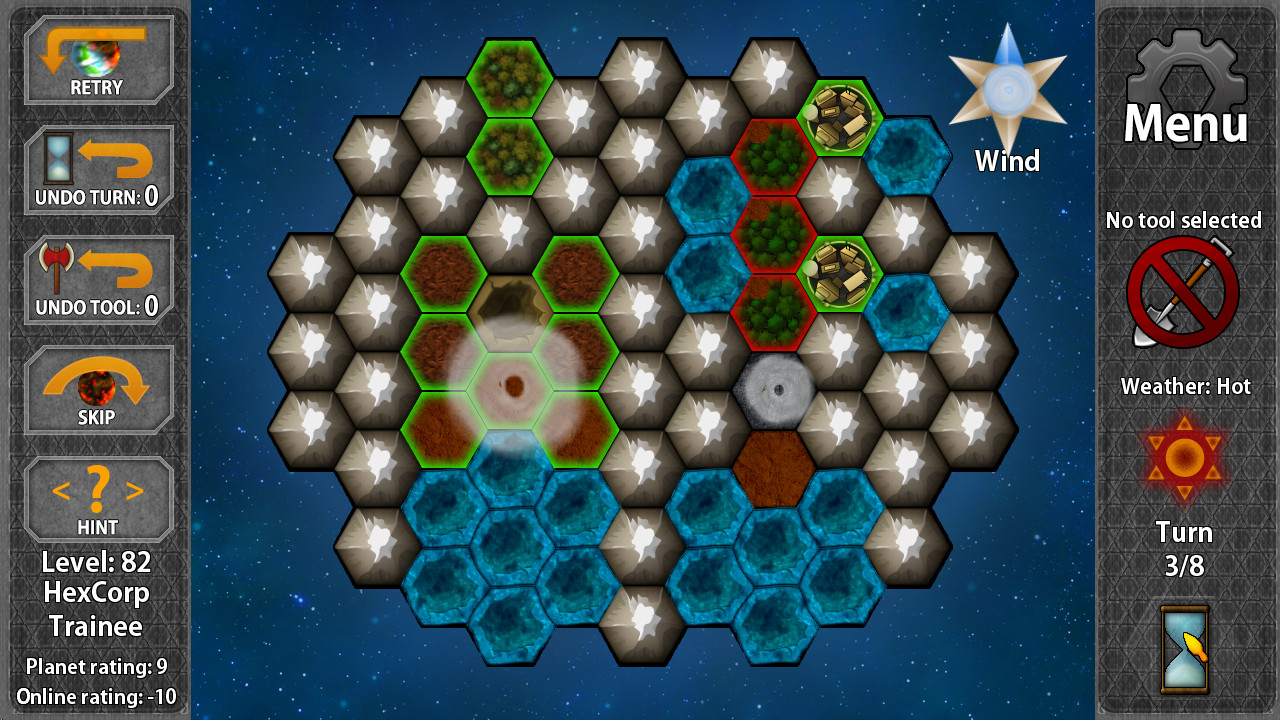

Per Aspera’s focus is collecting resources, which you then must spend to assist you in your efforts to terraform Mars. It starts slow, which is exactly what it needs to do given the scale that comes later, but it builds to become somewhat overwhelming. Where Per Aspera falls short in story however, it makes it up with gameplay. The ending also falls flat due to the pacing, and we’ll cover that a bit later. I don’t fault the devs, this is somewhat of a new concept and I’m willing to bet it’s tough integrating a story fluidly into a simulation/strategy game, but it tiptoes around the idea and doesn’t feel like it fully commits to it. It’s an enjoyable storyline, filled with top shelf voice actors like Troy Baker and Phil LaMarr, but the ratio of narrative to game leaves you wanting. Not only is it inconsistent in this area, but I found multiple times that one story branch would literally hit in the middle of AMI explaining a different one because I had finished researching an area. Unfortunately, the story does plod along, sometimes coming on strong but usually popping up randomly after hours of play. I highly recommend doing this, because besides just the research boost you’ll learn more about different factions and that will give the opportunity to side with different ones when it arises. As you continue uncovering the different areas of Mars, you also get the opportunity to unearth(pun intended) new narrative elements by researching abandoned facilities and rovers that litter the surface. Without spoiling anything, you spend this time making seemingly inconsequential responses, but those can lead to intriguing story bits. After all, you’re a machine, but one that is learning to make decisions that transcend your normal understanding and emotional level. Everything largely unfolds as you field calls from your creator, different factions, and contacts assigned to the Mars post while wondering what your place is in all of this. The hook for this game is a narrative tied to your existence, and I have to say Tlön Industries does a great job of making it interesting. You start the game as “AMI”, an artificial consciousness tasked with terraforming Mars so humans can inhabit the red planet. So when Per Aspera came out, I figured it was time to return to my roots and see just how the genre has evolved over time. Because of those games I have a special appreciation for simulation and strategy titles, even if I don’t have the time to play them that often. Since the internet wasn’t an important part of our everyday life in 2000 (at least in my everyday life), I played what we had, and a lot of that was stuff like Seven Kingdoms and Sid Meier’s Civilization.

I didn’t grow up with a lot of gaming systems, but I do remember playing around on my family’s home computer.

I guess that’s part of them, how each one of these games affects me, but in the simulation/strategy genre lies a large portion of my childhood. Read our Per Aspera first impressions and preview to see what we thought of the game after a few hours of play.I feel like I’ve been starting my reviews out a lot with what a game has been to me in my life. As AMI, an artificial consciousness with the prime directive of terraforming Mars for human colonization, you’ll explore a sprawling map based on real geographical data from NASA, harvest valuable resources from the surface, and experiment with various colonizing strategies to transform a dead world into a new home for life in our solar system. Mars’ surface is littered with humanity’s failed attempts at colonization, but this time has to be different – there is no room for human error. A challenging combination of hard science fiction and base building, Per Aspera takes players to the hostile surface of Mars and tasks them to colonise the planet on a scale never before seen in the genre. Per Aspera, the planet-sized city-builder from Raw Fury and Tlön Industries, is available today on Steam and GOG.com for £23.99 with a 10% launch discount.


 0 kommentar(er)
0 kommentar(er)
